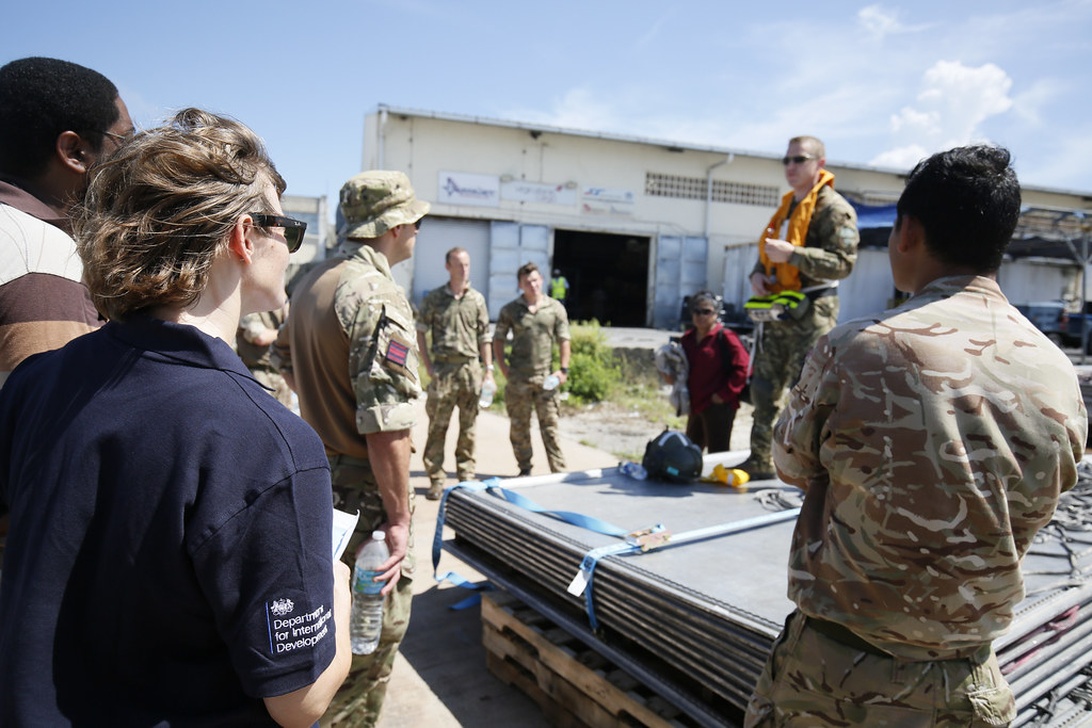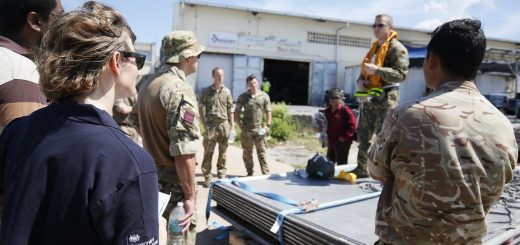How Technology is Transforming Humanitarian Work and NGO Operations
The global landscape of humanitarian need is, unfortunately, expanding, driven by a confluence of factors like climate change, protracted conflicts, and unforeseen crises. In my experience, the traditional methods of delivering aid, while born from noble intentions, are increasingly strained. But what if technology could offer a significant force multiplier? Indeed, we’re witnessing a profound transformation as digital tools and innovative approaches are being woven into the very fabric of humanitarian work and NGO operations, promising more efficient, effective, and far-reaching assistance. This isn’t just about upgrading old systems; it’s about fundamentally reimagining how we support the world’s most vulnerable populations, leveraging advancements to meet escalating global needs.
The Evolving Digital Toolkit for Aid Delivery and Operational Efficiency
The range of technologies being deployed in the humanitarian sector is truly astounding, moving far beyond basic IT infrastructure. I’ve found that the speed at which these tools are being adopted and adapted is remarkable. Consider **Artificial Intelligence (AI) and predictive analytics**; these are no longer just buzzwords. AI is enabling a crucial shift from reactive to proactive humanitarian work. Imagine being able to more accurately predict natural disasters or population displacements, allowing for better preparedness and resource allocation. AI-supported disaster mapping, for instance, can dramatically speed up response times, and specific applications like the Cholera Prediction Modelling System in Yemen have demonstrated AI’s capacity to forecast outbreak risks, enabling targeted interventions. Then there’s **blockchain technology**, which offers enhanced security and traceability. This is invaluable for transparent and efficient operations, from secure data sharing and transparent supply chains to robust identity management solutions for refugees and disaster victims. The potential to reduce fraud and improve collaboration among stakeholders is immense, though, as with many emerging technologies, more empirical evidence of its large-scale effectiveness in real-world humanitarian scenarios is still being gathered.
The way we gather and understand information during crises is also being revolutionized. **Crisis mapping and crowdsourcing** have evolved significantly, thanks to advancements like satellite imagery, GPS, and machine learning. What was once a largely manual, human-driven process is becoming increasingly automated, leveraging the collective intelligence of volunteers to gather, filter, and visualize data in real-time. This allows for a much more dynamic understanding of an unfolding situation. In parallel, **mobile health (mHealth) applications** are showing incredible promise in improving the continuity and quality of care, especially in resource-scarce humanitarian settings. I’ve seen studies, such as one involving a mobile, patient-controlled electronic health record (PCHR) for Syrian refugees in Lebanon, demonstrate significant improvements in data collection for non-communicable diseases and enhanced patient satisfaction due to the portability of their health records. However, challenges such as low provider adoption due to perceived extra workload and the need to integrate new tools into existing routines persist. Furthermore, the expansion of **internet access and connectivity** is fundamental. It’s no longer a luxury but a necessity for displaced persons to contact loved ones, access vital information about documentation or legal status through platforms like Refugee.info, and plan for their future. Initiatives providing Wi-Fi to refugees are a testament to this understanding. The breadth of these technological advancements is reshaping aid delivery, as highlighted by various analyses of 7 tech trends that are transforming humanitarian aid.
The innovation doesn’t stop there. **Digital identity** solutions are addressing the critical issue of over a billion people lacking official identification. By digitally storing birth registrations, vaccination records, and educational qualifications, an electronic ‘fingerprint’ is created that cannot be easily lost or destroyed, which is crucial for accessing services and rights. We’re also seeing fascinating applications of **Virtual Reality (VR)**, which is being used to create digital ‘safe spaces’ for children and young people who have experienced trauma, offering a cost-effective and scalable method for psychosocial support. **Drones** are becoming indispensable for aerial photography, monitoring agricultural conditions, and, crucially, for rapid damage assessment in emergencies. And let’s not forget **3D printing**, which offers the remarkable capability to manufacture essential equipment locally in vulnerable communities, including items like custom-designed wheelchairs and desks for children with disabilities in refugee camps, with potential for future production of prosthetics and other assistive devices. **Telemedicine** is also gaining traction, particularly in conflict zones, for specialties like radiology and mental health, though significant hurdles such as limited internet bandwidth, lack of equipment, and funding constraints remain. Each of these technologies, in its own way, is contributing to a more agile, responsive, and impactful humanitarian sector.
Data Driven Humanitarianism Power Peril and Platforms
The increasing use of technology naturally leads to an explosion of data. When harnessed effectively, **enhanced data analysis** provides humanitarian organizations with invaluable insights. Processing complex datasets into understandable dashboards can inform crucial decisions: where and when aid is needed most, identifying secure delivery routes in conflict zones, or optimizing the placement of supply storage. I’ve followed collaborations, like one between Mercy Corps and NASA in Niger using satellite imagery to locate water resources, that showcase the power of data to make interventions more targeted and efficient. However, this ‘datafication’ of aid is, however, a double-edged sword. The power of data is immense, but so are the responsibilities and risks that come with it. Managing these vast quantities of often sensitive information requires robust systems and protocols.
This is where specialized platforms become essential. For instance, many organizations find that leveraging a comprehensive solution like the NGO Online program, project, and grant management system is vital for navigating the unique needs of international humanitarian and development efforts, especially given its design for low-bandwidth environments and offline capabilities. Such platforms can offer comprehensive functionality, including project management, donor tracking, document collaboration, and sophisticated monitoring and reporting tools. This kind of tailored technology is crucial for NGOs to effectively manage their increasingly digital operations and the data they generate. But the collection and processing of large volumes of personal data (such as names, locations, health data, and financial information) inevitably raises significant concerns about **data security**. We’ve seen devastating incidents, such as the 2017 breach of a digital platform used by major NGOs and UN agencies, and the 2022 ICRC cyberattacks, which compromised the data of over 500,000 vulnerable individuals. The consequences of such breaches are severe, potentially exposing individuals to further harm, paralyzing an organization’s ability to deliver aid, and critically, undermining the trust that is so fundamental to humanitarian work.
Beyond security, there’s the challenge of **interoperability and standards**. Different organizations often use disparate data systems, which can hinder information sharing and collaborative efforts. This lack of standardization can create inefficiencies and prevent a holistic view of a crisis or the needs of a population. Moreover, the very act of collecting data, especially biometrics or detailed personal information, must be approached with extreme caution. The principle of ‘do no harm’ must extend rigorously to data practices, ensuring that data collection is consensual, serves a clear humanitarian purpose, and does not inadvertently put individuals or communities at greater risk, as seen in controversies surrounding data sharing with Rohingya refugees. There’s a pressing need for sector-wide adoption of strong data protection policies and ethical guidelines, like those being developed by the UN and other bodies, to navigate these complexities responsibly. It’s a continuous learning process, and in my opinion, one that requires constant vigilance and adaptation from everyone involved in the sector. Social media platforms, while useful for information dissemination, also pose risks related to misinformation, disinformation, and hate speech, further complicating the data landscape.
The Promise and Challenge of AI in Data Interpretation
Artificial Intelligence and Machine Learning (AI/ML) are increasingly used for data analysis, prediction, and early warning systems. For example, the Cholera Prediction Modelling System successfully used AI to forecast cholera outbreak risks in Yemen, enabling aid actors to target interventions more effectively. However, the reliance on AI/ML also introduces risks such as **algorithmic bias**. If the data used to train these algorithms reflects existing societal biases, or if the algorithms themselves are flawed, they can lead to unfair outcomes, misidentification (particularly of non-white faces or minority groups), or inequitable resource distribution. The ‘black box’ nature of some AI systems, where the decision-making process is opaque, further complicates accountability and can erode trust. It’s a powerful tool, but one that requires careful, ethical deployment and constant scrutiny to ensure it serves humanitarian goals equitably.
Navigating the Ethical Compass in a Digital Age Principles and Inclusion Under Pressure
The integration of technology into humanitarian action isn’t just a technical or operational shift; it forces a re-examination of the core **humanitarian principles: humanity, neutrality, impartiality, and independence**. How do these foundational tenets hold up in an increasingly digital world? The principle of **humanity**, which demands that we alleviate suffering and respect dignity, can be challenged if technology leads to a depersonalization of aid. While digital interfaces can increase accessibility, I believe they must support, not replace, essential human connection and empathy. There’s a risk that the drive for efficiency, measured in digital terms of speed and scale, could overshadow the nuanced, individual human needs and the dignity of those we seek to serve. People cannot be reduced to mere datapoints, and empathy cannot be automated.
**Impartiality**, the commitment to provide aid based on need alone, without discrimination, also faces new tests. While AI and big data were initially hoped to reduce human bias in needs assessments, we now understand that algorithms can embed and even amplify systemic discrimination. These algorithmic biases can be difficult to detect and can operate at a scale that creates widespread mistrust and harm. Furthermore, the **digital divide** itself is an impartiality issue. If needs assessments rely heavily on digital tools, what happens to marginalized groups who lack access to technology or digital literacy? Their needs might be overlooked, leading to inequitable aid distribution. Human intelligence, oversight, and transparency must remain central to preserve impartiality, ensuring decisions are not solely handed over to algorithmic ‘black boxes’.
Then there’s **neutrality**, the imperative not to take sides in hostilities or engage in controversies of a political, racial, religious, or ideological nature. This is crucial for gaining access to affected populations and ensuring the safety of aid workers. However, technology itself is rarely neutral; it often reflects the values and interests of its creators. Partnerships with tech companies that may have involvements in security or defense, or those that take public political stances in conflicts (as seen with some tech companies during the Russia-Ukraine conflict), can severely compromise the perceived neutrality of humanitarian organizations. This can lead to critical trust issues and jeopardize operations. Similarly, the principle of **independence** – maintaining autonomy from political, economic, military, or other objectives – can be strained by reliance on specific digital technologies or commercial providers. Vendor lock-in, the significant investment required for large-scale digital solutions, and the vulnerability to cyberattacks or internet shutdowns can all impact an organization’s operational autonomy and ability to act freely.
A critical aspect intertwined with these principles is **inclusion**. Digital technologies have the potential to reach more people, but they can also exacerbate existing inequalities or create new forms of exclusion. Are digital aid registration systems accessible to people with disabilities, the elderly, or those with low literacy levels? How do we ensure that digital cash transfers don’t disadvantage women in patriarchal societies where access to mobile phones might be controlled by men? These are the kinds of questions that, in my experience, humanitarian organizations must grapple with proactively. Ensuring that digital interventions are designed and implemented with a keen awareness of context, promoting participation, and securing informed consent are paramount. The goal must be to leverage technology to empower all individuals, not to inadvertently marginalize some further. 
Effective humanitarian action, like the planning session depicted here involving aid workers and potentially technological resources, increasingly relies on navigating complex ethical considerations alongside technological advancements to ensure inclusive and principled support.
Forging a Resilient and Humane Future The Symbiotic Path of Technology and Aid
The journey of integrating technology into humanitarian work is clearly not a simple trajectory of unbridled progress. It’s a complex path, filled with immense potential but also significant ethical and practical challenges. I’ve found that the most forward-thinking organizations are those that embrace innovation while maintaining a critical, reflective stance, constantly asking: how can this technology better serve people in crisis, and what are the potential unintended consequences? The risk of ‘surveillance humanitarianism,’ where data collected for aid purposes could be misused, or the creation of a ‘digital remoteness’ that distances aid workers from the lived realities of affected populations, are very real concerns that need active mitigation strategies.
Looking ahead, the key will be to foster a symbiotic relationship where technology amplifies human capabilities and compassion, rather than supplanting them. This means investing not only in new tools but also in digital literacy for both aid workers and recipient communities. It means developing robust ethical frameworks and data governance protocols that are adaptable to diverse contexts. It also requires a commitment to sharing learnings, encompassing both successes and failures, across the sector to build collective wisdom. The transformative power of technology in humanitarian aid is undeniable, but its ultimate value will be determined by our ability to wield it responsibly, ethically, and always with a primary focus on the dignity and well-being of those who depend on our support. The digital dawn is here, and it’s our collective responsibility to ensure it illuminates a path towards a more effective, inclusive, and profoundly humane future for all.








